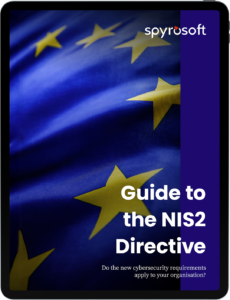The regulatory landscape in cybersecurity compliance
In response to the growing cyber-attack threat, governments worldwide have introduced numerous cybersecurity regulations and laws. These regulations aim to protect individuals, organisations, and national interests by setting standards for digital security. Compliance in cyber security is defined as adherence to laws regarding information security and data protection. The regulatory landscape is complex and ever-changing, with varying requirements across jurisdictions. Organizations must adhere to data protection laws to mitigate legal and financial risks.
Trends shaping cybersecurity compliance in 2024
One of the most significant trends shaping the cybersecurity landscape in 2024 is the increasing stringency of regulatory compliance requirements. Governments and regulatory bodies worldwide are recognising the need for more comprehensive cybersecurity measures and enacting stricter regulations to enforce them. For example, the Directive on the Security of Network and Information Systems (NIS Directive) and the future Directive on Measures for a High Standard Level of Cybersecurity across the Union (‘NIS 2’) proposed by the Commission in December 2020, the Cybersecurity Act, and the Commission Recommendation on building a Joint Cyber Unit. Recognising and preparing for cybersecurity risks is crucial to mitigate human error and ensure compliance with these regulations.
However, relying solely on compliance to achieve security protection only enables an organisation to cover some cybersecurity needs. The extent to which compliance is sufficient to ensure the success of cybersecurity operations tends to vary depending on several factors, such as the ease of implementing regulatory requirements or an organisation’s monitoring capabilities. Thus, a structured compliance program is essential to align cybersecurity strategies with regulatory frameworks, ensuring continuous improvement and effective risk mitigation.
Cybersecurity compliance in the European Union
The European Union has enacted several data privacy laws to protect the personal information of its citizens. Establishing a cybersecurity compliance program is crucial as a proactive measure against cyber threats. The General Data Protection Regulation (GDPR) is one of the most important regulations to be aware of, as it sets out the requirements for collecting, storing, and processing personal data. MSPs operating in the EU must ensure their systems adhere to GDPR standards by implementing various security controls such as data encryption and network firewalls to protect sensitive information and be prepared to face hefty fines if found in violation.
We’ll help your business meet new EU cybersecurity requirements
Learn moreKey features of General Data Protection Regulation for cybersecurity compliance
Key features of GDPR for cybersecurity compliance
- Transparency: Providing clear and transparent information on how data is being collected, stored, and used.
- Data Breach Protocols: Establishing protocols for responding to data breaches.
- Data Retention: Ensuring data is only kept for as long as necessary.
- Security Measures: Implementing various security measures to protect sensitive information and maintain its confidentiality, integrity, and availability as part of compliance with established standards and regulations.
The NIS2 Directive: enhancing EU cybersecurity standards
The NIS2 Directive is the EU-wide legislation on cybersecurity. It provides legal measures to boost the overall level of cybersecurity in the EU by ensuring:
- Member States’ preparedness, such as having a Computer Security Incident Response Team (CSIRT) and a competent national network and information systems (NIS) authority.
- Promoting cooperation among all Member States by setting up a Cooperation Group to support and facilitate strategic cooperation and the exchange of information.
- Fostering a culture of security across sectors vital for the economy and society, including energy, transport, water, banking, financial market infrastructures, healthcare, and digital infrastructure.
If you want to learn more about NIS2, click here for detailed information and support.
Become compliant with the EU’s cybersecurity requirements
Get the guideCybersecurity compliance in the United States
Operating in the United States requires adherence to various cybersecurity compliance regulations, which depend on the state, industry, and data type. Assembling a compliance team is a critical component of implementing an effective cybersecurity compliance program. These laws are segmented into federal and state levels. The Cybersecurity and Infrastructure Security Agency (CISA) plays a vital role in protecting critical infrastructure sectors, emphasizing the importance of compliance with cybersecurity regulations to safeguard sensitive data and maintain operational integrity.
Federal cybersecurity compliance regulations and risk assessments
HIPAA
The Health Insurance Portability and Accountability Act (HIPAA) is a federal regulation safeguarding protected health information (PHI). Cloud hosting providers for healthcare must comply with these stringent cybersecurity compliance standards to protect sensitive data.
FISMA
The Federal Information Security Modernization Act (FISMA) mandates that every government agency implements methods to secure its information systems against cyber threats. The risk analysis process is a structured set of steps essential for evaluating security posture. Revised in 2023, this law enhances coordination among federal agencies and improves cybersecurity measures. Managed Service Providers (MSPs) working with government entities must align their cybersecurity practices with FISMA to mitigate risk and comply with the law.
GLBA
The Gramm-Leach-Bliley Act (GLBA) governs the collection and management of financial information. All organisations handling financial data are required to comply with this act to ensure data security.
PCI DSS
The Payment Card Industry Data Security Standard (PCI DSS) is crucial for any organisation processing cardholder data. As of 31 March 2024, PCI DSS version 4.0 is mandatory, requiring, among other things, multi-factor authentication to enhance cybersecurity compliance.
NIST SP 800-53 Rev. 5
This set of guidelines, provided by the US National Institute of Standards and Technology (NIST), outlines best practices for information security in governmental and non-governmental organisations. The recent update, NIST SP 800-53 Rev. 5, along with the NIST Cybersecurity Framework version 2.0, underscores the importance of governance and supply chain security in cybersecurity compliance.
SEC Regulations
Since 18 December 2023, the Securities and Exchange Commission (SEC) has required publicly traded companies to report significant cybersecurity incidents within four business days, enhancing transparency and accountability in cybersecurity practices.
State-level cybersecurity compliance regulations
NYDFS
In the financial services sector, compliance with the New York Department of Financial Services (NYDFS) cybersecurity regulation is crucial. Conducting regular risk assessments is essential for organizations to protect personal data, ensure compliance with various data protection regulations, and enhance their overall security posture. NYDFS has introduced stringent notification requirements, especially concerning ransomware attacks, which underscore the need for comprehensive incident response and recovery plans.
CCPA
The California Consumer Privacy Act (CCPA) offers California residents control over their personal data, akin to the GDPR. This law impacts not only businesses based in California but also any entities dealing with California residents’ data, highlighting the importance of state-level cybersecurity compliance.
Conclusion: navigating cybersecurity compliance and data breaches in a complex landscape
In summary, the landscape of cybersecurity regulations in Europe and the US reveals a concerted effort to safeguard digital infrastructures against the evolving threat landscape. Adhering to industry-specific standards and best practices not only protects data from cyber threats but also ensures that security measures align with regulatory requirements to safeguard sensitive information. Europe, through the GDPR and NIS2, emphasises stringent data protection and cross-border cooperation. The United States, with its sector-specific laws and emerging federal regulations, focuses on a more flexible and innovation-driven approach. Both regions face the challenge of balancing security needs with economic growth and privacy concerns. As cyber threats become more sophisticated, continuous updates and international cooperation will be crucial in ensuring robust cybersecurity frameworks.
The regulations that will help you to achieve compliance in the EU market include GDPR, NIS2, and, in some cases, IEC 62304. In the US, please pay attention to HIPAA, FISMA, and NIST SP 800-53 Rev.5. As the US is divided by states, the regulations can differ from one another.
At Spyrosoft, we can assist you in improving your cybersecurity compliance and properly building your documentation according to applicable regulations. You can contact us if you are looking for a reliable cybersecurity partner. Our clients already enjoy the experience of being fully compliant with their software according to applicable regulations.
Book a meeting with us to get more detailed information.
About the author
SCHEDULE A CONSULTATION


